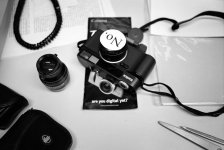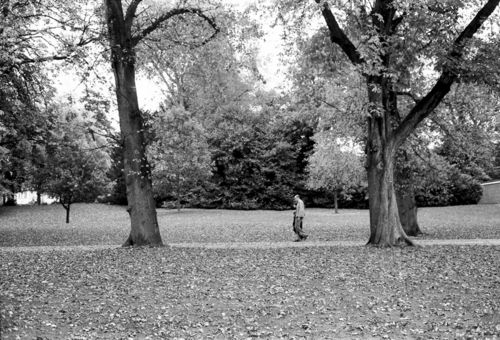climbing_vine said:
This is a good point. I certainly wouldn't consider home-burned CDs (and maybe not even pressed ones) to be archival quality storage, but since they've been a pervasive commodity for 20 years (very *un*like most variations of floppies, which in the larger scheme of things are somewhat a speciality item) I have no doubt that we'll continue to have the facility to read and copy them for a long time. Just like negatives, digital archival materials need some care to remain "archival". Luckily, the nearly infinitely easier and cheaper means of backing up digital vs analog makes this a much easier proposition, as you note.
Part of the problem here, IMO, is that most people are simply not interested in paying for the Good Stuff (or at least the Better Stuff). I've had to jump through flaming hoops to save data on clients' dead or near-death HDs becasue they simply couldn't be bothered to back up their gigabytes of digital images (usually taken with digital cameras, meaning they're truly SOL if I can't get their data back, which sometimes has been the case). When I can get a few of them behind the idea of getting those images backed up onto CD/DVD, they don't want to pay for anything more than whatever's on special at Staples or Best Buy, because "they're all the same, right?". (Hint: best bet for optical disks with reasonable archival quality without going broke is Verbatim's DataLife Plus CD-R/DVD-R disks; that's all I use for my stuff now, after having gotten burned by a few other "name-brand" disks from outfits that should know better).
As far as shooting film goes, it works like this for me:
- Cameras: there isn't a single blessed digital camera out there at the moment, including the gigunda Canons, that works the way I truly like to work with a camera. Since I've crossed SLRs of either imaging medium off my list of "working" cameras anyway, the big digital guns don't even get to the starting line, but the digital overlay simply makes the going more tedious. It's
not that I can't get a good (or great) picture from using the things, but the "getting there" is no fun at all. (And I really,
really hate big-ass cameras and lenses.) I'll do the menu-driven thing
after I get home, thank you.
- Film: I know what I like. I've long gone off the "emulsion-of-the-month" thing. I know the labs I hand the film off to (if color or chromogenic b/w; otherwise I soup it myself). I have several "go-to" emulsions whose characteristics I've pretty much nailed down. I don't do a lot of head-scratching about color balance in a given situation, because I know what to expect 90% of the time (the other 10% handled by the rare use of a filter, or, failing that, PS). I feel mush lighter on my feet working with film (figuratively , at least...yes, fifteen rolls is bulkier than a honkin' big CF card, but clearly manageable). I know the film I want to use. I load the film I want to use. Then I go, go, see how I go!
- Scanning. Yes, it's work. But a drag? Come
on, this is the greatest development in post-shoot photography since Kodak mailers! I never knew how much better my work could look before doing my own scanning and printing...and this was before I even halfway knew what in hell I was doing with the stuff.
- Printing: Yes, inkjet printing sucked for a while. Correction: it
really sucked when Epson changed over from dyes to pigment-based inks, and we haven't fully recovered from that changeover, although things are a lot better in the past year. I still think the printer I'm currently using (HP 8750) offers a more convincing wet-print look than other pritners I've tried (especially printing b/w), is acceptably archival (at least Wilhelm says so, for what that's worth), gives me
great b/w and color without going through major contortions, and manages to do all this with dyes, which to my eyes work better in the final print than pigs. Is any inkjet print as good as a silver b/w print? If by "better" you mean "has the same look, but improved", the quick answer is no. Is it great in its own right? Definitely, but just as with silver printing, it comes down to the method and the practicioner. In terms of color, it's miles ahead of
anything short of a stone-cold pro darkroom setup with a big RA-4 processor. We've all seen crappy silver prints (and probably made a few...don't be shy admitting it)). We've definitely seen, and likely made, dreadful inkjet prints. You can get great results from either process (or any permutation in-between).
So, yeah, I love film a good deal more than digital for most everything I do, at least for now. On the post-shoot side, I love digital a lot more than conventional print processes. And I love my iPod, but I'm keeping (and playing) all my vinyl and CDs.
Sorry for the little rant, folks. I still need that first cup of tea...
- Barrett
P.S. Photo taken late 2000 @ my old stock-photo agency desk.






